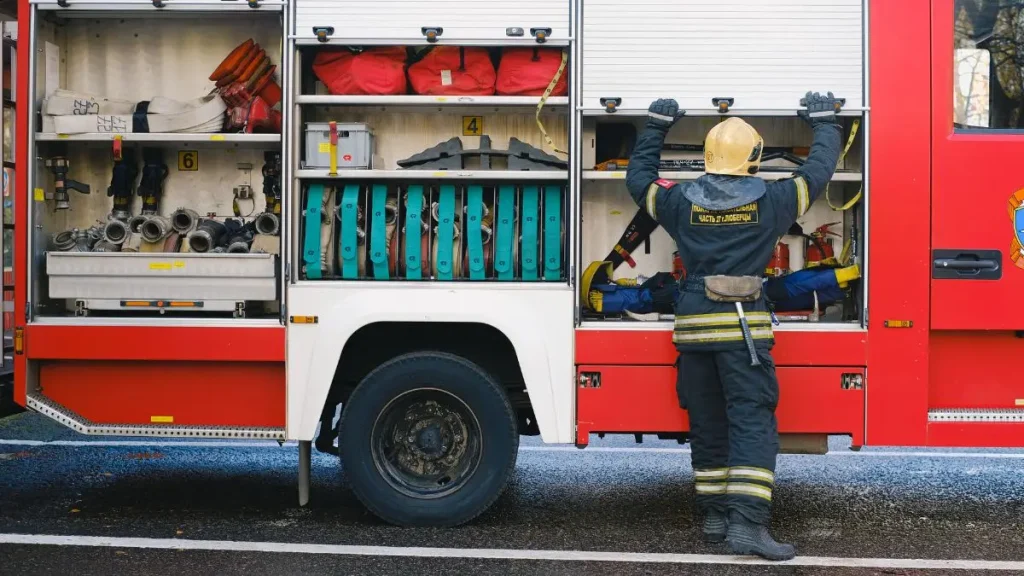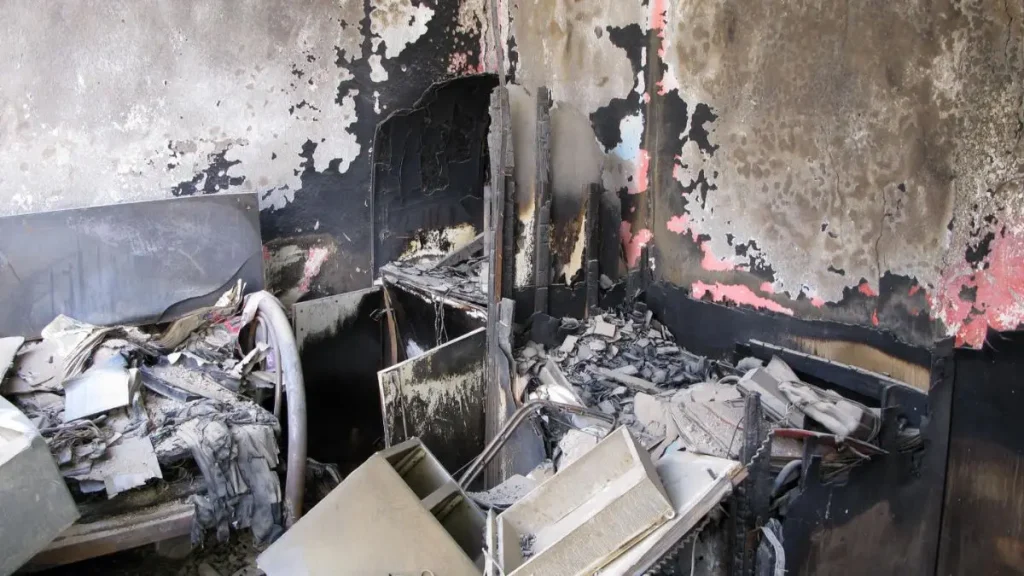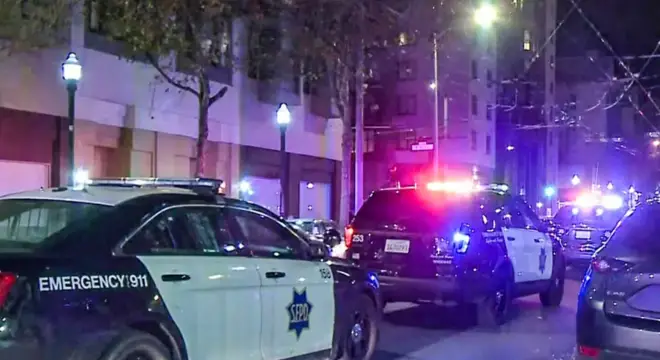Foothill Home Reduced to Ashes in Second Fire Incident
I was standing on my porch when the first plume of smoke rose over Foothill Road. By late morning, firefighters had it under control — or so we all thought.
Not even a day later, the sirens were back. This time, thick black smoke billowed from the same address, and the fire wasn’t just in the brush — it was tearing through the home itself.
If you’ve ever watched flames eat through a neighbor’s house while crews fought to keep nearby trees from igniting, you know the mix of fear and helplessness that settles in.
For Douglas County, this was a gut punch: two major fires at the same property in less than 24 hours.
Incident Timeline — How It All Unfolded
I’ve gone through the official reports, and here’s the sequence as it really happened.
Just before 9:50 a.m., a call came in about a small wildland fire at 928 Foothill Road. It sounded like something the crews could handle quickly, and by 11:15 a.m., firefighters had knocked it down.
But then, within hours, everything changed. A wave of 911 calls started pouring in — people reporting thick black smoke coming from the same address. This wasn’t a flare-up in the brush anymore; the house itself was burning.
The home’s only occupant managed to get out safely, but the damage was already in motion. According to Record Courier, the scene escalated fast, and for anyone nearby, it was impossible to ignore.
Emergency Response & What I Saw in the Reports

What struck me was how quickly help arrived — and from how far. Crews from East Fork, Lake Tahoe, and Carson City all joined in. When multiple agencies roll in, you know the situation is serious.
Foothill Road had to be shut down. Flames were closing in on a propane tank, and engines were positioned to protect the homes around it. If you’ve ever stood near a burning propane tank, you know how tense that moment can feel.
The property was surrounded by trees, which only made the job harder for the firefighters and riskier for the neighborhood.
We’ve seen before how multi-agency responses can make a difference — like when a Northwest Indiana home fire injured a firefighter but all residents escaped.
Why This Fire Was Especially Dangerous?
If you live near the edge of wildland areas like I do, you already know the risks. Trees and dry brush right next to a house? That’s a ready-made fuel line for fire.
Here, the danger wasn’t just the vegetation. That propane tank on the property could have turned the whole scene into an explosion in seconds. Add in Foothill’s narrow, winding roads — slowing down emergency access — and you’ve got a perfect storm.
This isn’t about paranoia; it’s about understanding why certain locations are far harder to protect once a fire starts.
In a similar incident, a mobile home fire in Orange County claimed the life of a 73-year-old woman, showing how quickly residential fires can turn deadly when fuel sources are involved.
What the Reports Didn’t Tell You
Reading through the coverage, I kept thinking — there’s so much missing here. No one has said what actually started the second fire. Was it an electrical fault? Embers from the first blaze? Something else entirely?
We also haven’t heard from the homeowner. What’s their story right now? And what about insurance — will they rebuild?
Without these details, it feels incomplete. You and I both know those are the questions people ask each other first after a fire.
If you’ve heard more details or have your own thoughts about what could have caused this second blaze, drop your comments below — I’d love to hear what you think.
Safety Lessons for Anyone Living in Fire-Prone Areas
I’m not here just to tell you what happened — I want you to walk away with something you can actually use. If you live anywhere near foothills or wildland, you need to think ahead.
Start with defensible space. Clear at least 30 feet around your home — no overgrown bushes, no low-hanging branches near your roof. If a fire crew has to defend your property, this space could be the difference between a close call and a total loss.
Next, harden your home. That means ember-proof vents, fire-resistant roofing, and keeping gutters clean. You’d be shocked at how often a single ember starts the whole nightmare.
And finally, be ready to leave. Have a go-bag packed, know your escape routes, and if you’ve got propane, make sure you know how to shut it off quickly. The middle of a fire is not when you want to be figuring that out.
If you want quick updates on local fire alerts, evacuation notices, and safety tips, you can join a WhatsApp alert list that shares real-time verified information — it’s been a huge help for many residents in staying prepared.
Local Resources and Support You Can Tap Into

If something like this ever hits you, know that you’re not alone. Douglas County has emergency response programs, and the local Red Cross often sets up shelter for displaced families.
If you’ve got insurance, contact them immediately — not tomorrow, not next week. The sooner you start that process, the faster you can stabilize. And if you’re uninsured or under-insured, check for state or county grants that help with post-fire recovery.
Sometimes the hardest step is just asking for help. But trust me, people and organizations want to help — you just have to reach out.
Long-Term Fire Prevention and Resilience
You and I both know this isn’t going to be the last fire Douglas County sees. That’s why thinking long-term is crucial.
Push for stronger building codes in your community. Support neighborhood fire-safety drills so that when the next blaze comes, people aren’t frozen wondering what to do. And if your home survives this time, invest in retrofits — fire-resistant siding, better window glass, and landscaping designed to slow flames.
The truth is, no one can promise you’ll never face a fire again. But you can absolutely stack the odds in your favor. And when you do, you’re not just protecting your own home — you’re making the whole neighborhood safer.
Tragic events like the Philadelphia house fire that left three people dead are stark reminders of why every home needs a fire safety plan.
Final Thoughts
Fires like the one on Foothill Road aren’t just headlines — they’re wake-up calls. If you live in a fire-prone area, you can’t afford to think “it won’t happen to me.” I’ve seen too many people caught off guard, and trust me, it’s not a position you ever want to be in.
Use this incident as motivation. Clear your space, harden your home, and have a plan. The day you need it, you’ll be glad you did. And remember — you’re not powerless. Preparation is your best defense.
Want to read more real-life fire incident stories and safety lessons? Visit our Home Incidents category for the latest coverage and prevention tips.
Disclaimer: This article is for informational purposes only and is not a substitute for professional fire-safety advice. Always follow local fire department guidance and official evacuation orders. The author assumes no responsibility for actions taken based on this content.


